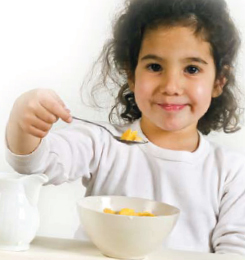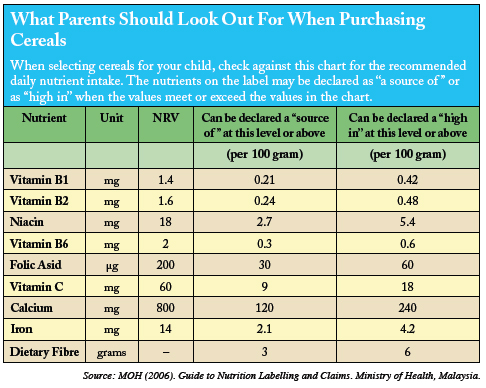For many years now, studies have illustrated the importance of eating breakfast for a child. One of the healthiest ways to do this is by serving your child a bowl of fortified cereals. There are many reasons why cereal is often recommended for breakfast, as its nutritional advantages are clear, such as:
- A good source of key nutrients in your child’s diet.
- Provides your child’s body with calcium, iron, zinc, vitamin A, vitamin C and B vitamins.
- Ready-to-eat cereals are a source of whole grains for children aged two to eighteen, providing them numerous health benefits.
Picking What’s Right
The real issue lies in picking out what’s right for your child. With so many options out there in the supermarket aisle, it is easy to be confused on the right cereal brand to choose! What more with the different claims made by each brand, you are bound to be confused and possibly misled as well.
One thing to remember when picking out the right cereal is this: don’t let your child be the ultimate decision-maker in this situation. Cereal companies have also become smart advertisers by banking on television or cartoon characters to attract the child’s attention. It is without a doubt that your child will pick what he or she is interested in, as the healthfulness of the cereal is the last thing on their mind. Also, children are most likely to pick cereal brands with the most flavours, which are typically the sweetest as well as the ones with the most sugar. A healthy option is to add fresh fruits such as bananas or apples in your child’s unsweetened cereal to give him or her variety in taste.
Take in mind that sugar content varies greatly among different cereal brands. Just how much sugar is there in your cereal? Keep this measurement in mind: every five grams of sugar amounts to one teaspoon. So in order to pick a healthy cereal, choose one with less than five grams of sugar consisting mainly of whole grains fortified with vitamins and minerals.
Be sceptical of the health claims made by cereal makers. The most important place where you should be getting all the health information is the nutrition label on the box instead. Learn how to read it efficiently to truly understand what it is claiming. Also, do take note of the amount of dietary fibre contained.
Lastly, the thing to remember when picking out the healthier-choice cereal for your child is this: ask yourself if YOU would eat it yourself. If the answer is no, chances are your child won’t want to eat it as well.







Comments